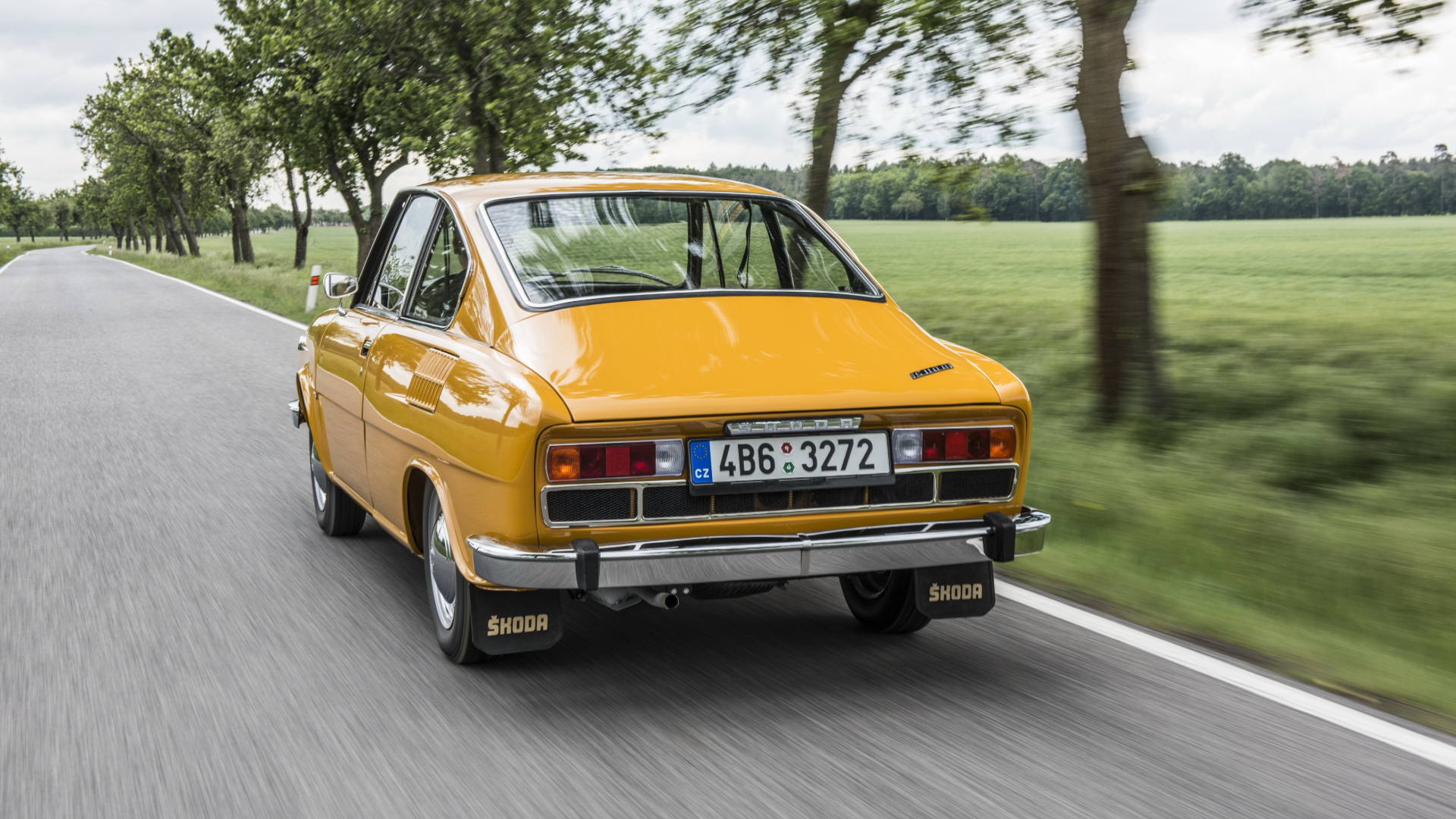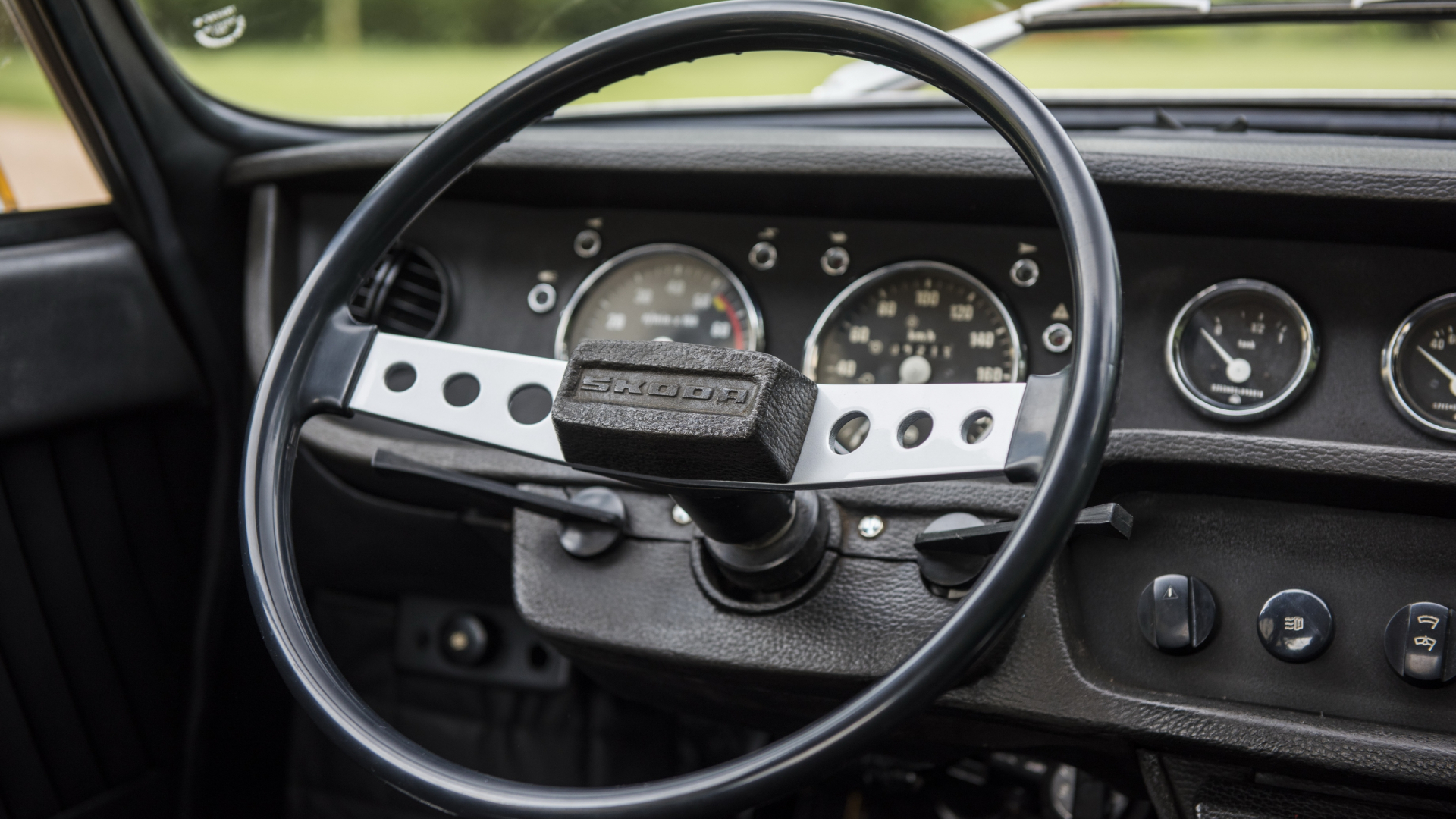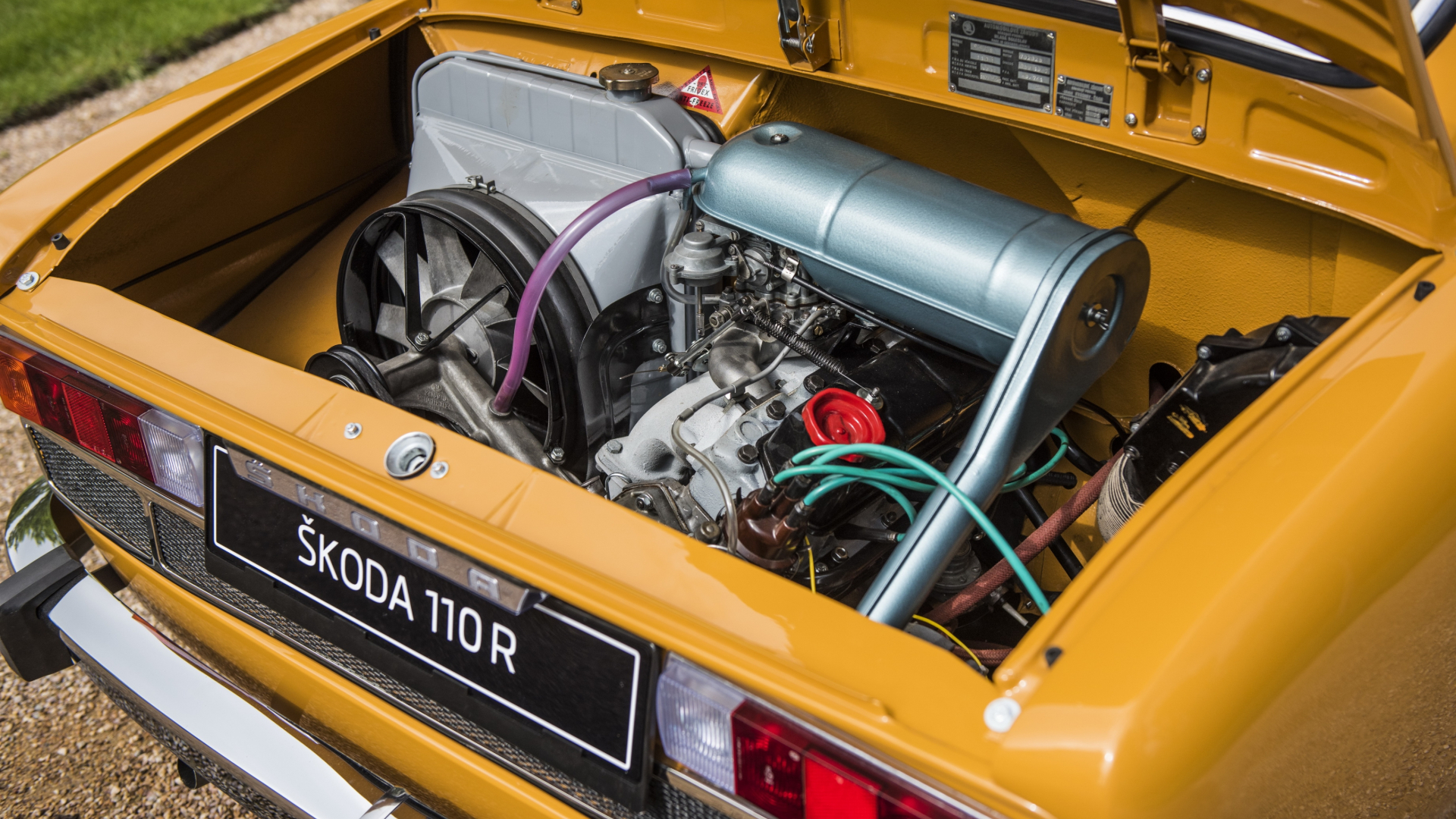Fifty years ago, an elegant but unassuming coupe was revealed at an engineering fair in Brno, Czechoslovakia. From humble beginnings, the Skoda 110 R became the basis for giant-killing race and rally machines – and would influence Skoda road cars for two decades to come.
The 110 R was based on the popular 100/110 L series saloon, but its more laid-back windscreen and gently tapering tail created a much sleeker silhouette. Its longer doors featured frameless windows, too.
Powered by a 1.1-litre four-cylinder engine, the 110 R mustered 52hp at 4,650rpm. Even with a kerb weight of just 880kg (roughly the same as a Lotus Elise), performance was modest: 0-62mph took 19 seconds.
A plucky Skoda test driver apparently recorded a top speed of 90mph on an East German autobahn.
Traction in action

On-paper performance didn’t tell the whole story, though. Having its engine mounted above the back axle gave the car excellent traction – and lively handling. Vítězslav Kodym of Skoda Classic describes a “thrilling driving experience”.
Skoda upgraded the 110 R’s brakes with a dual-circuit system manufactured under licence from Dunlop. The 52 horses reached the rear wheels via a four-speed manual gearbox.
Inside, the coupe looks markedly more special than the saloon. A large rev counter – redlined at 5,750rpm – shares equal billing with the speedo, while oil pressure, water temperature and fuel gauges sit alongside. The two-spoke steering wheel has drilled spokes for a period motorsport vibe.
The 110 R is also more practical than you might expect. It has a 250-litre boot beneath the front bonnet, plus 120 litres of luggage space behind the (child-sized) rear seats. Fuel consumption is quoted as 33.2mpg.
On your Marx, get set…

The 110 R turned plenty of heads, but Kodym cites “political conditions at the time” for slow initial sales. The car was also expensive: 78,000 crowns equated to 40 months’ wages in the former Czechoslovakia. Either way, just 121 cars left the Kvasiny factory by the end of 1970.
However, matters soon improved and by 1973 Skoda was building 6,000 examples of the 110 R, a whopping 93 percent for export. By 1975, 36 per cent of production was right-hand-drive cars for the UK.
More Skoda Octavias at the 60th anniversary event.
— Tim Pitt (@timpitt100) April 30, 2019
Octavia WRC (Safari Rally spec – 2001) and the 600hp, 227mph Bonneville record-breaker (2011). pic.twitter.com/iGVIHAnAw9
The 110 R lived on until December 1980, by which point 57,085 had been built. It was replaced by the Garde (1981-1984) and subsequently the Rapid (1984-1990), both of which maintained the rear-engined coupe template.
That all changed in the 1990s when the Volkswagen Group became the majority shareholder in Skoda – and the cars became more conventional (yet also more contemporary). Today, the 110 R really does resemble a curio from largely forgotten past.
‘R’ is for racing

Perhaps the 110R’s greatest achievements were in motorsport, though, where it evolved into the legendary 130 RS – known as the ‘Porsche of the East’.
Skoda crafted that car’s door skins and roof from aluminium, while its bonnet and wings were glassfibre-reinforced plastic. The result was weight loss to just 720kg, giving the 130hp racer swift acceleration and a 136mph top speed.
Among the silverware accrued by the 130 RS was a manufacturers’ championship win for Skoda in the 1981 European Touring Car Championship, plus a class victory at the 1977 Monte Carlo Rally.
We’d love to see a present-day successor to the 110 R, with proper coupe styling (not a crossover, please) and vRS performance. Let us know your thoughts in the comments below or via social media (@retro_motor on Twitter or @retromotoruk on Instagram).
ALSO READ:
BMW Garmisch: the reborn Gandini concept that predicted the future



[…] ‘The Porsche of the East’: Skoda celebrates 50 years of sports cars […]
[…] ‘The Porsche of the East’: Skoda celebrates 50 years of sports cars […]